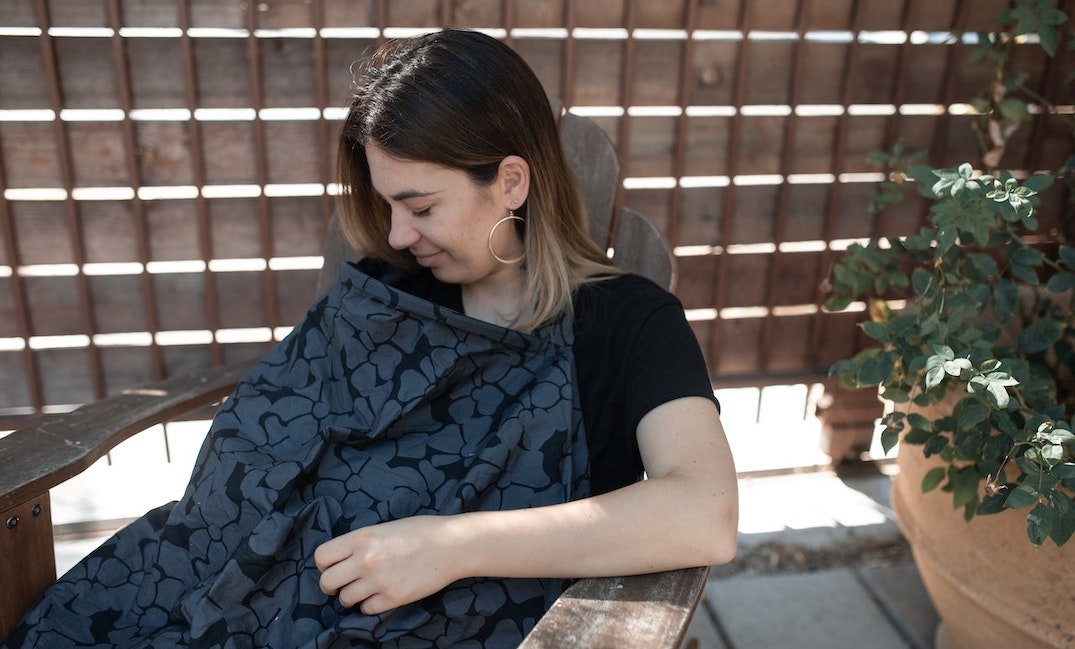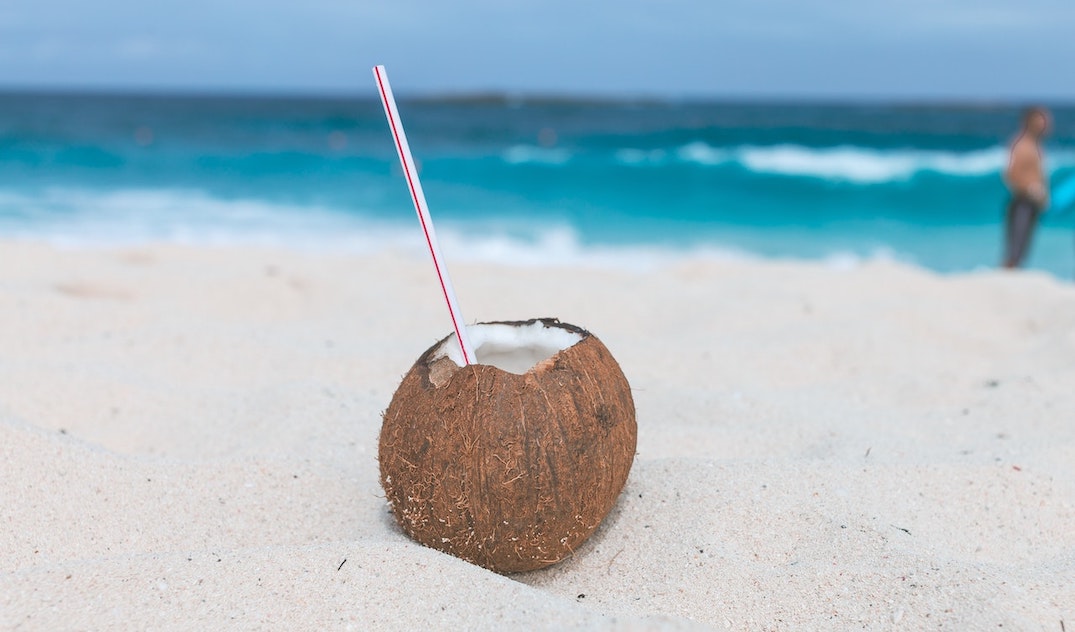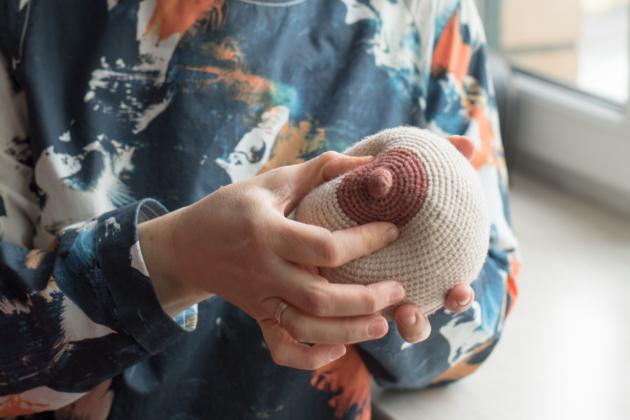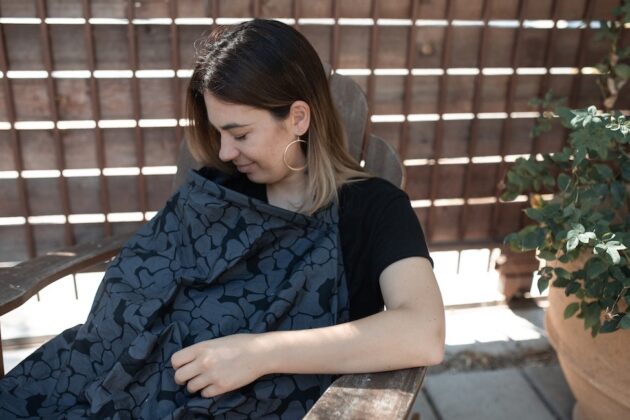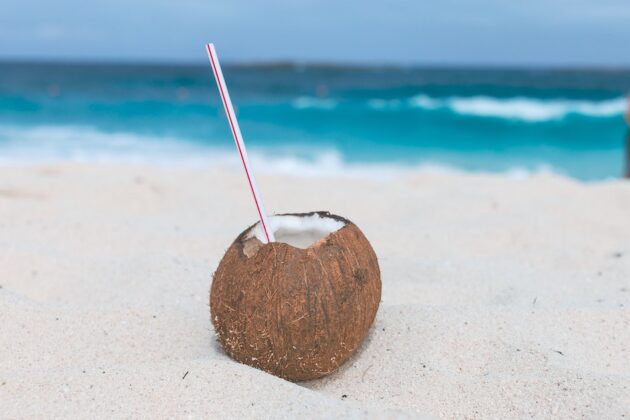Breast Pain from Breastfeeding: Causes & Treatment
New moms have heard the phrase “breast is best” since the early 1990s when the World Health Organization (WHO) used it to promote breastfeeding throughout the world. Breastfeeding provides your baby’s first “perfect food.” Breast milk also contains helpful antibodies that keep your baby as healthy as possible in the first months of life.
What the WHO doesn’t mention is that breastfeeding can be both rewarding and challenging. Breast pain is one of the more common challenges new moms experience, particularly when starting the process.
Some common causes of breast pain when nursing include poor or ineffective latching, clogged milk ducts, infections, oversupply of milk, and long times between feedings. While uncomfortable, each of these issues can be managed, and prevented from happening in the future, if you know the cause and use some simple remedies.
This guide goes over the different causes of breast pain when breastfeeding, strategies to help improve your symptoms, and more. Learn ways to determine the cause of your breast pain and when to seek medical attention.
Causes of breast pain during breastfeeding
Breast pain when breastfeeding can come on rapidly or slowly. You may feel like your entire breast aches or that only your nipples are affected when the baby is latching on. Depending on the cause, breast pain during breastfeeding can manifest in different ways:
- Aching of the entire breast. This often occurs when you are engorged, although infection of the breast (called mastitis) can begin with a generalized aching of your entire breast.
- Soreness in the upper outer quadrant (where the milk ducts are more plentiful). Engorgement of the breast may not feel like the entire breast is sore. Instead, you will feel more discomfort in the upper, outer quadrant.
- Localized pain. Local pain outside of the nipple often comes from a clogged milk duct. Because just one duct is blocked, the soreness will be localized to a single area on the breast.
- Nipple soreness or rawness. The nipples should not be sore if everything is going well when nursing. Common causes of nipple soreness from breastfeeding include a poor latch, ineffective sucking, and localized yeast infections.
- Sharp, stinging pain. Sharp, stinging pain can be felt if you have a yeast infection, but it may also mean that the blood supply to the nipples is temporarily reduced. This issue, called nipple vasospasm, is seen more often in women who have Raynaud’s disease. If the nipple is white for an extended period, you may have this common breastfeeding issue.
Let’s look more at the different causes of breast pain during breastfeeding and look at some solutions to ease your discomfort.
Breast engorgement
Breast engorgement comes from an oversupply of milk or an under-utilization of what’s already there in your breast to feed your baby. Breast engorgement may just feel like “fullness;” however, some women say it is painful, particularly if the skin is quite stretched from sudden engorgement. In most cases, you’ll find the pain annoying more than truly painful.
Causes
There are several reasons why breast engorgement can occur:
- Infrequent feedings. If your baby is not feeding as often as they were previously, you may have more milk in your breasts than what is getting consumed during feedings.
- Oversupply of milk. If you have a stable milk supply, the amount you have is matched fairly well with the amount used. Beginning a new job or taking a vacation away from your baby without weaning first can cause an oversupply of milk and breast pain.
- Poor latch or ineffective feeding. Your baby may have many issues with ineffective feeding that temporarily lead to breast engorgement. If the latch isn’t effective or the suck is poor for any reason, the amount removed during feeding may not be enough to prevent engorgement.
- Clogged milk ducts. If a number of milk ducts become clogged at once, the breast may feel engorged. The same can happen if just one major milk duct is clogged, preventing milk from the glands supplying the duct to leave during feeding.
Treatment
The treatment of breast pain due to engorgement depends on the cause. You will need to give your best guess as to why the breast feels engorged and then address the underlying issue. In most cases, a few strategies can help:
- Use a cool compress on your breasts. Cool temperatures will reduce pain and slow milk production in the breasts by reducing blood flow slightly. Some women use cool cabbage leaves tucked inside their bras for this purpose.
- Express a small amount of milk to reduce the pressure. You don’t want to pump; instead, just squeeze out some breast milk using gentle hand expression until the pain is improved.
Poor latch or positioning
Poor latch or incorrect positioning is the most common cause of pain while nursing. If the baby isn’t well latched or is positioned in a way that causes an ineffective suck, the nipple can be sore while nursing. Not only will nursing be painful, but the baby will also be unable to efficiently empty the breast. This may cause breast engorgement and pain.
Causes
A poor latch may simply be the result of being a new mom and just learning how to breastfeed. The baby should grasp a large part of the nipple before suckling. If this doesn’t happen, sucking will be inefficient, and breastfeeding may be painful.
Other causes include these common issues:
- Inverted nipples
- Tongue-tie issues
- Cleft lip or palate
- Baby with prematurity, Down syndrome, or heart defects preventing a strong suck
- Baby is sleepy or sick
Treatment
Some causes of a poor latch are transient, such as having a sleepy or sick baby who will return to improved sucking patterns after the issue passes. Be sure to touch your baby’s lips and insert the nipple only when the mouth is wide open. This helps the baby grasp the entire areola before sucking.
For issues like inverted nipples, you may need to use a nipple shield in the beginning to help enhance the sucking potential. You can work with a lactation consultant to devise ways to help a baby with a cleft lip or palate to nurse more efficiently. If your baby has a problem with being tongue-tied, try breastfeeding more frequently and when your breasts are softer.
Nipple damage or soreness
Your nipples must withstand a lot of force during suckling. If they are cracked or infected, you may feel sharp pains when your baby is nursing. In between feedings, the pain will be less, but it may not dissipate completely. Residual itching or burning can persist between feedings.
Causes
Causes of nipple pain or discomfort include infant thrush, pump trauma, cracked nipples, poor latch, or mastitis (breast infection). Many cases of cracked nipples happen early in the process when you and your baby are just learning how to breastfeed.
Treatment
- You can reduce soreness by correcting your positioning and ensuring a good latch. Other solutions may include:
- Ensure the correct size flange when using a pump
- Avoid harsh soaps or shampoos on the nipples when bathing
- Change breast pads frequently
- Let a small amount of breast milk dry on the areola (this substance has antimicrobial properties)
- Avoid using substances that contain alcohol on your nipples
Clogged milk duct
A single clogged milk duct feels like a tender lump in the breast. Most are located in the upper, outer quadrant of the breast because more milk-producing glands are found in that region.
Causes
Clogged milk ducts can happen even if you do everything right and are nursing regularly. Things that increase your chances of having this type of issue include being engorged and wearing a bra that is too tight.
Treatment
Nurse more frequently to help empty the breast each time. You also need to ensure that the latch is good and try to nurse in different positions to help drain the entire breast. Wear loose bras that support without pinching the breasts.
Milk bleb/blister
Pain from a milk bleb or blister is localized and tender to the touch. You will feel and see a blister on the nipple that can sting when trying to breastfeed. You may also feel generalized pain in the breast when nursing.
Causes
The main cause of a milk bleb is a blister forming because a piece of skin covers one of the openings in the nipple where milk exits. You can also have dried milk clogging one of those tiny pores. A poor latch or tight bra can also contribute to the problem.
Treatment
The best treatment for a milk bleb is to continue nursing to get the flow of milk happening at a steady pace. Soak your breasts in warm Epsom salts or apply a warm compress to relieve the pain. Wear loose bras and gently exfoliate the nipple with a washcloth before applying olive oil to soften the nipple.
Thrush
When your baby has a yeast infection inside their mouth, it’s called “thrush.” It is common among babies who often have an immature immune system. You can get the same infection yourself when nursing your baby.
Your baby will have white spots or a whitish coating inside the mouth. If you are affected, you can have pain with nursing or immediately afterward. You may also have issues with nipple redness, rash, or dry, flaky skin.
Causes
Thrush is caused by a normal yeast organism called Candida albicans. It is present everywhere and not dangerous unless a person is very immune compromised. Babies—even healthy ones—have an immature immune system, so they are naturally more likely to get an infection caused by this organism.
When the infection is in the mouth, it can be passed to you, leading to the rash and soreness of the nipple and skin of the breast.
Treatment
The most natural treatment for a yeast infection of the breast is to keep it clean and dry. A small amount of miconazole cream applied to the nipple between feedings can also help.
Mastitis
Mastitis is a bacterial infection that enters the nipples and inflames the breast tissue. It is often caused by staph or strep bacteria, leading to redness of the breast, aching pain, fever, and chills.
Causes
Mastitis can happen to any breastfeeding woman. Risk factors for mastitis include having cracked nipples, stress, smoking, poor nutrition, breast engorgement, poor latch, blocked milk ducts, and using too much nipple cream.
Treatment
If you only see a small area of redness and have few other symptoms, apply warm, moist washcloths and continue breastfeeding. If you have worsening pain, fever, and chills, then antibiotics are needed. Be sure to empty your breasts completely to help resolve your infection.
Raynaud’s phenomenon
Raynaud’s disease involves having areas of your body (often the hands) lose color because the blood vessels are constricted. In some cases, the nipple can demonstrate this phenomenon while nursing. If you have this issue (also called nipple vasospasm), you may notice pain with nursing localized to the nipple along with a whiteness of the nipple.
Causes
About 23 percent of women will have some nipple vasospasm when nursing. The risk factors most often seen include having Raynaud’s disease in other body areas and having cracked nipples, poor latch, or nipple thrush. Smoking will also contribute to nipple vasospasm.
Treatment
Try breastfeeding only in warm environments and then cover up afterward to prevent cooling of the nipples. Wear clothing that keeps your breasts and nipples warm at all times. Finally, do not smoke.
How a lactation consultant can help with painful breasts from breastfeeding
With so many different causes of breast pain, sorting out what the cause might be is often confusing. This is where a lactation consultant can help. Your lactation consultant can help you decide what’s causing your pain and assist you in correcting the issue.
Lactation consultants are trained in the art and science of lactation. They often have years of experience and will be able to watch your techniques while nursing. After listening to you and evaluating your situation, a lactation consultant can provide you with enhanced confidence in your own ability to breastfeed for as long as you and your baby want.
Even if you have no issues with breast pain now, a lactation consultant can start you off on the right foot. Knowing how to have an effective latch and learning to reduce your overall risk factors for pain will help you avoid future problems.
Learning how much lactation consultants cost and what your insurance will cover are the first steps to getting their help. Most insurance providers offer full coverage of an initial lactation consultant visit while you and your baby are still in the hospital. After that, insurance providers will generally cover at least a portion, if not all, of your fees.
When to seek medical attention for painful breasts from breastfeeding
Most cases of breast pain when nursing are self-limited and resolve after you change your nursing behaviors (establishing a good latch, emptying the breast completely, and nursing regularly).
Signs you need to seek medical attention for breast pain include having a breast lump that does not resolve within a few days and having a rash that does not improve after using a mild antifungal cream like miconazole.
Persistent pain that threatens to prematurely stop nursing before you feel ready would also be a reason to seek medical attention.
Not all cases of mastitis require antibiotics; however, if you have significant fever, chills, or malaise, you should see your care provider for an evaluation to see if antibiotics are needed.
New moms have heard the phrase “breast is best” since the early 1990s when the World Health Organization (WHO) used it to promote breastfeeding throughout the world. Breastfeeding provides your baby’s first “perfect food.” Breast milk also contains helpful antibodies that keep your baby as healthy as possible in the first months of life.
What the WHO doesn’t mention is that breastfeeding can be both rewarding and challenging. Breast pain is one of the more common challenges new moms experience, particularly when starting the process.
Some common causes of breast pain when nursing include poor or ineffective latching, clogged milk ducts, infections, oversupply of milk, and long times between feedings. While uncomfortable, each of these issues can be managed, and prevented from happening in the future, if you know the cause and use some simple remedies.
This guide goes over the different causes of breast pain when breastfeeding, strategies to help improve your symptoms, and more. Learn ways to determine the cause of your breast pain and when to seek medical attention.
Causes of breast pain during breastfeeding
Breast pain when breastfeeding can come on rapidly or slowly. You may feel like your entire breast aches or that only your nipples are affected when the baby is latching on. Depending on the cause, breast pain during breastfeeding can manifest in different ways:
- Aching of the entire breast. This often occurs when you are engorged, although infection of the breast (called mastitis) can begin with a generalized aching of your entire breast.
- Soreness in the upper outer quadrant (where the milk ducts are more plentiful). Engorgement of the breast may not feel like the entire breast is sore. Instead, you will feel more discomfort in the upper, outer quadrant.
- Localized pain. Local pain outside of the nipple often comes from a clogged milk duct. Because just one duct is blocked, the soreness will be localized to a single area on the breast.
- Nipple soreness or rawness. The nipples should not be sore if everything is going well when nursing. Common causes of nipple soreness from breastfeeding include a poor latch, ineffective sucking, and localized yeast infections.
- Sharp, stinging pain. Sharp, stinging pain can be felt if you have a yeast infection, but it may also mean that the blood supply to the nipples is temporarily reduced. This issue, called nipple vasospasm, is seen more often in women who have Raynaud’s disease. If the nipple is white for an extended period, you may have this common breastfeeding issue.
Let’s look more at the different causes of breast pain during breastfeeding and look at some solutions to ease your discomfort.
Breast engorgement
Breast engorgement comes from an oversupply of milk or an under-utilization of what’s already there in your breast to feed your baby. Breast engorgement may just feel like “fullness;” however, some women say it is painful, particularly if the skin is quite stretched from sudden engorgement. In most cases, you’ll find the pain annoying more than truly painful.
Causes
There are several reasons why breast engorgement can occur:
- Infrequent feedings. If your baby is not feeding as often as they were previously, you may have more milk in your breasts than what is getting consumed during feedings.
- Oversupply of milk. If you have a stable milk supply, the amount you have is matched fairly well with the amount used. Beginning a new job or taking a vacation away from your baby without weaning first can cause an oversupply of milk and breast pain.
- Poor latch or ineffective feeding. Your baby may have many issues with ineffective feeding that temporarily lead to breast engorgement. If the latch isn’t effective or the suck is poor for any reason, the amount removed during feeding may not be enough to prevent engorgement.
- Clogged milk ducts. If a number of milk ducts become clogged at once, the breast may feel engorged. The same can happen if just one major milk duct is clogged, preventing milk from the glands supplying the duct to leave during feeding.
Treatment
The treatment of breast pain due to engorgement depends on the cause. You will need to give your best guess as to why the breast feels engorged and then address the underlying issue. In most cases, a few strategies can help:
- Use a cool compress on your breasts. Cool temperatures will reduce pain and slow milk production in the breasts by reducing blood flow slightly. Some women use cool cabbage leaves tucked inside their bras for this purpose.
- Express a small amount of milk to reduce the pressure. You don’t want to pump; instead, just squeeze out some breast milk using gentle hand expression until the pain is improved.
Poor latch or positioning
Poor latch or incorrect positioning is the most common cause of pain while nursing. If the baby isn’t well latched or is positioned in a way that causes an ineffective suck, the nipple can be sore while nursing. Not only will nursing be painful, but the baby will also be unable to efficiently empty the breast. This may cause breast engorgement and pain.
Causes
A poor latch may simply be the result of being a new mom and just learning how to breastfeed. The baby should grasp a large part of the nipple before suckling. If this doesn’t happen, sucking will be inefficient, and breastfeeding may be painful.
Other causes include these common issues:
- Inverted nipples
- Tongue-tie issues
- Cleft lip or palate
- Baby with prematurity, Down syndrome, or heart defects preventing a strong suck
- Baby is sleepy or sick
Treatment
Some causes of a poor latch are transient, such as having a sleepy or sick baby who will return to improved sucking patterns after the issue passes. Be sure to touch your baby’s lips and insert the nipple only when the mouth is wide open. This helps the baby grasp the entire areola before sucking.
For issues like inverted nipples, you may need to use a nipple shield in the beginning to help enhance the sucking potential. You can work with a lactation consultant to devise ways to help a baby with a cleft lip or palate to nurse more efficiently. If your baby has a problem with being tongue-tied, try breastfeeding more frequently and when your breasts are softer.
Nipple damage or soreness
Your nipples must withstand a lot of force during suckling. If they are cracked or infected, you may feel sharp pains when your baby is nursing. In between feedings, the pain will be less, but it may not dissipate completely. Residual itching or burning can persist between feedings.
Causes
Causes of nipple pain or discomfort include infant thrush, pump trauma, cracked nipples, poor latch, or mastitis (breast infection). Many cases of cracked nipples happen early in the process when you and your baby are just learning how to breastfeed.
Treatment
- You can reduce soreness by correcting your positioning and ensuring a good latch. Other solutions may include:
- Ensure the correct size flange when using a pump
- Avoid harsh soaps or shampoos on the nipples when bathing
- Change breast pads frequently
- Let a small amount of breast milk dry on the areola (this substance has antimicrobial properties)
- Avoid using substances that contain alcohol on your nipples
Clogged milk duct
A single clogged milk duct feels like a tender lump in the breast. Most are located in the upper, outer quadrant of the breast because more milk-producing glands are found in that region.
Causes
Clogged milk ducts can happen even if you do everything right and are nursing regularly. Things that increase your chances of having this type of issue include being engorged and wearing a bra that is too tight.
Treatment
Nurse more frequently to help empty the breast each time. You also need to ensure that the latch is good and try to nurse in different positions to help drain the entire breast. Wear loose bras that support without pinching the breasts.
Milk bleb/blister
Pain from a milk bleb or blister is localized and tender to the touch. You will feel and see a blister on the nipple that can sting when trying to breastfeed. You may also feel generalized pain in the breast when nursing.
Causes
The main cause of a milk bleb is a blister forming because a piece of skin covers one of the openings in the nipple where milk exits. You can also have dried milk clogging one of those tiny pores. A poor latch or tight bra can also contribute to the problem.
Treatment
The best treatment for a milk bleb is to continue nursing to get the flow of milk happening at a steady pace. Soak your breasts in warm Epsom salts or apply a warm compress to relieve the pain. Wear loose bras and gently exfoliate the nipple with a washcloth before applying olive oil to soften the nipple.
Thrush
When your baby has a yeast infection inside their mouth, it’s called “thrush.” It is common among babies who often have an immature immune system. You can get the same infection yourself when nursing your baby.
Your baby will have white spots or a whitish coating inside the mouth. If you are affected, you can have pain with nursing or immediately afterward. You may also have issues with nipple redness, rash, or dry, flaky skin.
Causes
Thrush is caused by a normal yeast organism called Candida albicans. It is present everywhere and not dangerous unless a person is very immune compromised. Babies—even healthy ones—have an immature immune system, so they are naturally more likely to get an infection caused by this organism.
When the infection is in the mouth, it can be passed to you, leading to the rash and soreness of the nipple and skin of the breast.
Treatment
The most natural treatment for a yeast infection of the breast is to keep it clean and dry. A small amount of miconazole cream applied to the nipple between feedings can also help.
Mastitis
Mastitis is a bacterial infection that enters the nipples and inflames the breast tissue. It is often caused by staph or strep bacteria, leading to redness of the breast, aching pain, fever, and chills.
Causes
Mastitis can happen to any breastfeeding woman. Risk factors for mastitis include having cracked nipples, stress, smoking, poor nutrition, breast engorgement, poor latch, blocked milk ducts, and using too much nipple cream.
Treatment
If you only see a small area of redness and have few other symptoms, apply warm, moist washcloths and continue breastfeeding. If you have worsening pain, fever, and chills, then antibiotics are needed. Be sure to empty your breasts completely to help resolve your infection.
Raynaud’s phenomenon
Raynaud’s disease involves having areas of your body (often the hands) lose color because the blood vessels are constricted. In some cases, the nipple can demonstrate this phenomenon while nursing. If you have this issue (also called nipple vasospasm), you may notice pain with nursing localized to the nipple along with a whiteness of the nipple.
Causes
About 23 percent of women will have some nipple vasospasm when nursing. The risk factors most often seen include having Raynaud’s disease in other body areas and having cracked nipples, poor latch, or nipple thrush. Smoking will also contribute to nipple vasospasm.
Treatment
Try breastfeeding only in warm environments and then cover up afterward to prevent cooling of the nipples. Wear clothing that keeps your breasts and nipples warm at all times. Finally, do not smoke.
How a lactation consultant can help with painful breasts from breastfeeding
With so many different causes of breast pain, sorting out what the cause might be is often confusing. This is where a lactation consultant can help. Your lactation consultant can help you decide what’s causing your pain and assist you in correcting the issue.
Lactation consultants are trained in the art and science of lactation. They often have years of experience and will be able to watch your techniques while nursing. After listening to you and evaluating your situation, a lactation consultant can provide you with enhanced confidence in your own ability to breastfeed for as long as you and your baby want.
Even if you have no issues with breast pain now, a lactation consultant can start you off on the right foot. Knowing how to have an effective latch and learning to reduce your overall risk factors for pain will help you avoid future problems.
Learning how much lactation consultants cost and what your insurance will cover are the first steps to getting their help. Most insurance providers offer full coverage of an initial lactation consultant visit while you and your baby are still in the hospital. After that, insurance providers will generally cover at least a portion, if not all, of your fees.
When to seek medical attention for painful breasts from breastfeeding
Most cases of breast pain when nursing are self-limited and resolve after you change your nursing behaviors (establishing a good latch, emptying the breast completely, and nursing regularly).
Signs you need to seek medical attention for breast pain include having a breast lump that does not resolve within a few days and having a rash that does not improve after using a mild antifungal cream like miconazole.
Persistent pain that threatens to prematurely stop nursing before you feel ready would also be a reason to seek medical attention.
Not all cases of mastitis require antibiotics; however, if you have significant fever, chills, or malaise, you should see your care provider for an evaluation to see if antibiotics are needed.








